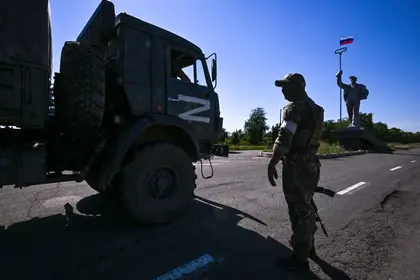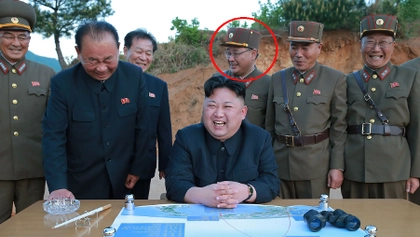Late in 2022, a Russian newspaper "Verstka" along with Z-blogger and pro-Kremlin propagandist Anastasia Kashevarova, reported significant casualties in a mobilized Russian battalion in the Svatovsky district of the occupied Luhansk region, with at least 500 reported deaths.
At the time, the Russian Defense Ministry dismissed the reports as a “provocation” and “deliberate disinformation” aimed at discrediting the Kremlin’s armed forces.
JOIN US ON TELEGRAM
Follow our coverage of the war on the @Kyivpost_official.
However, during the fall of 2022, Russian troops indeed faced a tough situation on the front when the Armed Forces of Ukraine (AFU) initiated a successful counteroffensive in Kharkiv Oblast, swiftly liberating great swathes of occupied territory.
The AFU's subsequent offensives threatened strategically important towns in the neighbouring Luhansk Oblast, such as Svatove and Kreminna.
To defend these positions, the Russian army hastily deployed thousands of inexperienced mobilized soldiers to the front lines, essentially as cannon fodder. Many of them died or went missing at that point.
Since then, relatives of these soldiers have been attempting to obtain information from Russian authorities. They appealed to Putin with written complaints, urging him to address the situation and hold accountable the commanders who subjected their loved ones to harsh conditions.
IStories obtained complaints from these relatives and interviewed some of them, confirming the authenticity of the documents.

South Korea Demands 'Immediate Withdrawal' of North Korean Troops in Russia
According to the records obtained, the first group of mobilized men reached Svatovo in early October, amidst intense fighting, shortly after receiving their summons.
Relatives questioned Putin why their loved ones, initially promised secondary roles or deployment in liberated areas, were thrust into the frontline.
“During the draft, they said that they would stand on the second and third lines or somewhere in the liberated territories. Why were they thrown into hell?!” one man asked.
The relatives consistently described the experiences of those mobilized as “hell.” Many of them shared a common story: soldiers were sent to the frontline without proper weapons, training, or support from higher-ups in the military command.
Igor Khovalkin, 23, was taken from a Moscow workers' dormitory after working on a night shift.
His mother, Lyudmila, said that he was forced into this situation under pressure, saying: “Last year, my child was captured.
“You could say that his hands were twisted, and he was dragged into this hell. Under pressure, he was sent [to the front] by force. He didn't want to."
Lyudmila expressed concern about taking young men like her son Igor Khovalkin, saying: “They have aspirations, a future. You have a special army. The whole show-off is shown on TV: the army, and that's it. But there is nothing.”
Many complaints repeat a similar line about how the command threw soldiers to the front line with insufficient weapons.
"At three o'clock in the morning, they were taken out into the field without special military equipment and given a machine gun with two horns in their hands," writes a relative of the mobilized.
“There are only two grenades and two rounds of ammunition in the guns; there are no commanders, and there is no communication either. Then the real hell began,” a relative of another military man complained to Putin.
One mother said: “Why were the mobilized people thrown there without providing everything they needed?! There are no weapons, no food, no water even. Where are our state-of-the-art weapons and our strongest army in the world?”
After spending days on the frontline without communication and amidst constant shelling, many mobilized soldiers attempted to find safer locations.
However, commanders forced them back to the frontline. Refusal to return resulted in confinement in pits, basements, and special prisons under military police protection.
The “Svatovo Slaughter” was far from an isolated incident and in the 14 months since, numerous examples of Russia throwing poorly trained and equipped men into battle as little more than cannon fodder have been documented.
Last year the open-source intelligence website “Frontelligence Insight” made public a report on the Russian Defense Ministry’s regulations that revealed cannon fodder units are essentially official Kremlin policy.
Exclusive interviews last year with two Russian prisoners of war conducted by Kyiv Post appear to confirmed reports that parts of the Russian army are poorly provisioned, badly motivated and generally treated as cannon fodder.
And in the ongoing assault on Avdiivka, Russia has launched wave after wave of troops at Ukrainian positions, some in obsolete 70-year-old vehicles that provide next to no protection on a modern battlefield.
You can also highlight the text and press Ctrl + Enter






